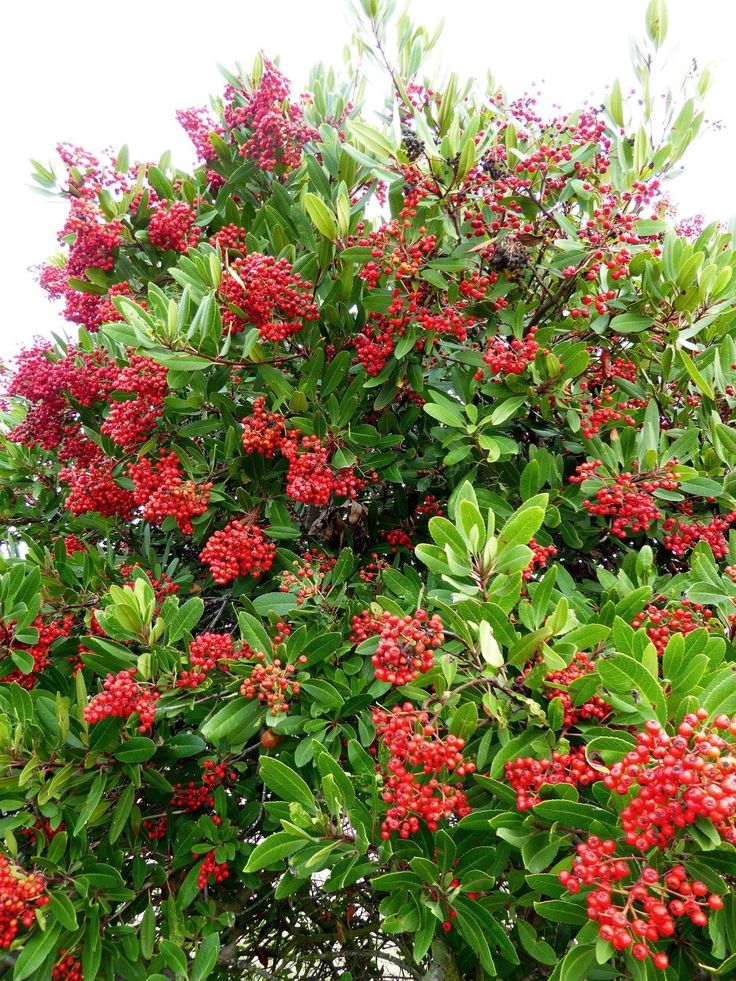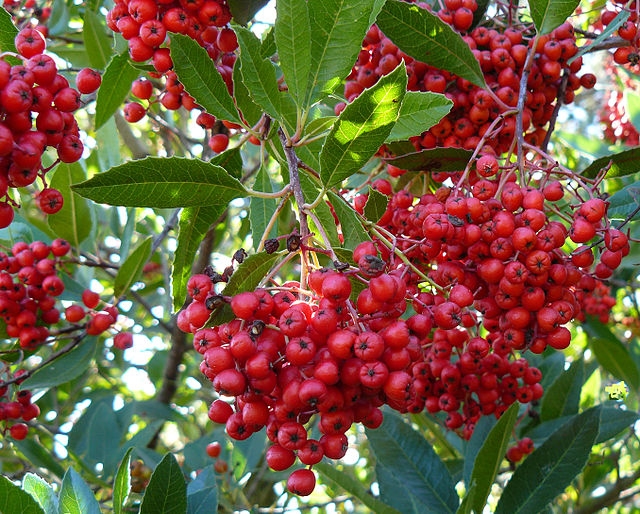Heteromeles arbutifolia

Heteromeles arbutifolia, commonly known as Toyon or California Holly, is an iconic native plant species found along the coastlines and in the foothills of California.
Revered for its striking appearance, ecological benefits, and cultural significance, Toyon holds a special place in the hearts of Californians and nature enthusiasts alike.
In this comprehensive article, we will delve into the botanical intricacies, habitat preferences, life cycle, ecological importance, conservation status, and care guidelines for Heteromeles arbutifolia.
Botanical Description
Toyon is a versatile evergreen shrub characterized by its glossy, leathery leaves, clusters of white flowers, and bright red berries.
The plant typically grows to heights of 6 to 15 feet tall, though it can reach up to 25 feet under favorable conditions.
The leaves are alternate, elliptical to lanceolate in shape, and serrated along the edges, giving them a distinctive appearance.
From late spring to early summer, Toyon produces small, white, five-petaled flowers in dense clusters. These clusters are very attractive to pollinators such as bees and butterflies.
These flowers give way to clusters of round, bright red berries in the fall and winter months. This provides a valuable food source for birds and wildlife during the colder seasons.
Habitat and Distribution
Toyon is native to a variety of habitats throughout California, including coastal scrub, chaparral, oak woodlands, and mixed evergreen forests.
It is often found growing on slopes, along canyons, and in disturbed areas, where it thrives in well-drained, sandy or rocky soils.
Toyon is particularly abundant in the coastal regions of central and southern California, where it plays a vital role in stabilizing soils, providing habitat for wildlife, and enhancing biodiversity.
Additionally, Toyon is cultivated as an ornamental plant in gardens and landscapes throughout California and beyond, where it adds beauty and resilience to drought-tolerant landscapes.
Life Cycle and Phenology
As an evergreen shrub, Toyon maintains its foliage year-round, providing color and structure in the landscape throughout the seasons.
Flowering typically occurs in late spring to early summer, with peak bloom periods varying depending on local climate conditions.
The flowers are followed by the development of berries in the fall, which ripen to a bright red color by late autumn.
The berries persist through the winter months, providing a valuable food source for birds and other wildlife during periods of scarcity. Toyon may experience periods of summer dormancy during hot, dry conditions, conserving water and energy until cooler, wetter conditions return in the fall.
Ecological and Cultural Importance
Toyon plays a significant ecological role as a habitat provider, food source, and soil stabilizer in California's native plant communities.
The dense foliage provides cover and nesting sites for birds and small mammals, while the flowers and berries attract a wide range of pollinators and seed dispersers.
Additionally, Toyon is valued for its cultural significance among California's indigenous people. They used the berries to make a traditional drink known as "Indian tea" or "California holly tea."
Toyon is also celebrated in California cultural heritage as inspiration for the song "The Holly and the Ivy." It has also appeared in literature, poetry, and art throughout history.

Caring for Heteromeles arbutifolia
Sunlight
Plant Toyon in a location that receives full sun or partial shade.
This is because it prefers plenty of sunlight for optimal growth and flowering.
Watering
Provide regular water during the establishment period, then gradually reduce watering once the plant is established.
Toyon is drought tolerant once established and prefers well-drained soil.
Soil
Plant in well-drained, sandy or loamy soil with a neutral to slightly acidic pH. Toyon is adaptable to a variety of soil types but may struggle in heavy clay soils.
Pruning
Prune lightly after flowering to maintain a compact shape and remove dead or damaged branches.
Heteromeles arbutifolia can be pruned to encourage bushier growth and enhance its ornamental appearance.
Mulching
Apply a layer of organic mulch, around the base of the plant to help retain soil moisture and suppress weeds.
Avoid covering the stems or foliage with mulch, as this can lead to rot and disease.
By adhering to these care instructions, you can nurture robust and lively Toyon plants in your garden or landscape.
This contributes to preserving native plant species and enhancing California's natural scenery.
Whether cultivated as a focal point, hedge, or wildlife sanctuary, Toyon's glossy leaves, white blooms, and vibrant red berries exude the essence of California's indigenous flora.
Leave a Reply
You must be logged in to post a comment.